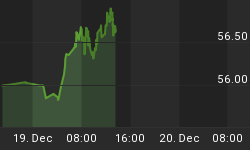Great manias in financial and tangible assets have been methodical in their euphoric climax and consequent contractions. With six now recorded since the first one in 1720, it has been fascinating to watch this one track its way through the typical post-bubble path-- now to twenty months after the stock market peak when global credit markets would start another phase of distress.
The signal for the beginning of the contraction has been the reversal in the yield curve. Typically, the boom can run for 12 to 16 months against an inverted curve, as the demand for margin by speculators drives short-rates up faster than long-rates. While rising interest rates seem to worry Wall Street strategists, history records that troubles begin when the curve reverses to steepening and short-dated market rates of interest start a steep decline. It has been prudent to recognize that this along with declining Treasury bill rates is one of the warnings about the end of a speculative frenzy and its inevitable collapse.
This time around, the curve inverted in early 2006, and the 16 months counted out to June, 2007, which we frequently discussed. Included was the seasonal tendency of credit spreads narrowing into to May, and then if the party has been wild enough -- reversing to disaster. By mid June, the curve and spreads had changed enough to conclude that the greatest train wreck in the history of credit had begun, making banks and financials a "Widows and Orphans Short."
The next step in the path was that as credit became more stringent through the summer of 2008, our conclusions were that a typical fall crash was possible and considered the 1929 and 1873 examples would provide reliable guidance. This worked out rather well, setting up the possibility of a dramatic revival in animated spirits to around April-May. On the equivalent move in 1930, Barron's wrote that it would be "difficult to quench the fires of enthusiasm." This spring the equivalent move in commodities, corporate bonds and stocks ran into early June--close enough--when a number of our indicators registered excessive speculation. Also the run against the dollar became overdone.
Where the fall crash and its rebound have been the main events, the next one is determined by the twenty-month count following the 1929 and 1873 bubbles. Credit markets then took a turn for the worse.
June is the fateful month and one key signal would be another reversal in the yield curve- -this time to flattening, which could be soon followed by spread widening.
When steepening started in 2007 standard research applauded it as banks usually make better spreads, but we noted that steepening at the end of mania signals financial distress. Our concern about the reversal to flattening in June is that it indicates the resumption of illiquidity. And the reversal in the curve last week was a "heads up" on a market change that could hit inappropriately positioned traders. It will also change orthodoxy about the "benefits" of steepening.
On timing and credit market change that is global in nature, most bank stocks in most countries are again vulnerable. Over the past two years market forces have assigned the always specious notion of a national economy that can be managed to the dust heap of history.
Technical Comment
Since it was developed in 1997, our proprietary Bank Trading Guide has provided a number of reliable "sells', that usually lead the high by a few weeks. An outstanding one was when LTCM collapsed. It does not provide "buys'.
Our last entry into banks and financials was in mid February on the plunge in the BKX (US bank index) to 19.5 and then in early March when the index had plunged to 18. Quite simply, the sector was devastated and we were looking for good time out in April-May. The rally was a quick double to 43 in early May when the advice was to begin lightening up, with more aggressive selling reserved until our Guide gave the signal.
More recently, we have noted that it has become more volatile, which is usually preliminary to an important reversal.
Ross has updated the Guide and added to it, and the charts follow.
When the Bank Trading Guide becomes overbought along with independent market readings there has a tendency create a high in the BKX within the next ten days and then decline by 10% to 17% during the following three to five weeks. We have entered the period of anticipated weakness.
| Sell Signal | Max offside | Max Potential | Trading Days | |||
| 11/20/1989 | 1.577 | 1.70 | -8% | 1.41 | 10% | 48 |
| 3/30/1993 | 27.94 | 29.66 | -6% | 24.70 | 12% | 47 |
| 4/3/1995 | 28.42 | 29.59 | -4% | 28.42 | 0% | 0 |
| 10/6/1997 | 75.96 | 76.57 | -1% | 66.27 | 13% | 16 |
| 4/5/2004 | 100.68 | 100.68 | 0% | 90.62 | 10% | 24 |
| 2/25/2008 | 88.35 | 88.72 | 0% | 73.22 | 17% | 13 |
| Signal | Potential for this move | ||
| 5/28/2009 | 36.72 | 33.05 | 10% |
| 30.48 | 17% | ||
BKX

There are six occurrences since 1986 (the '89 example is Citicorp).
















